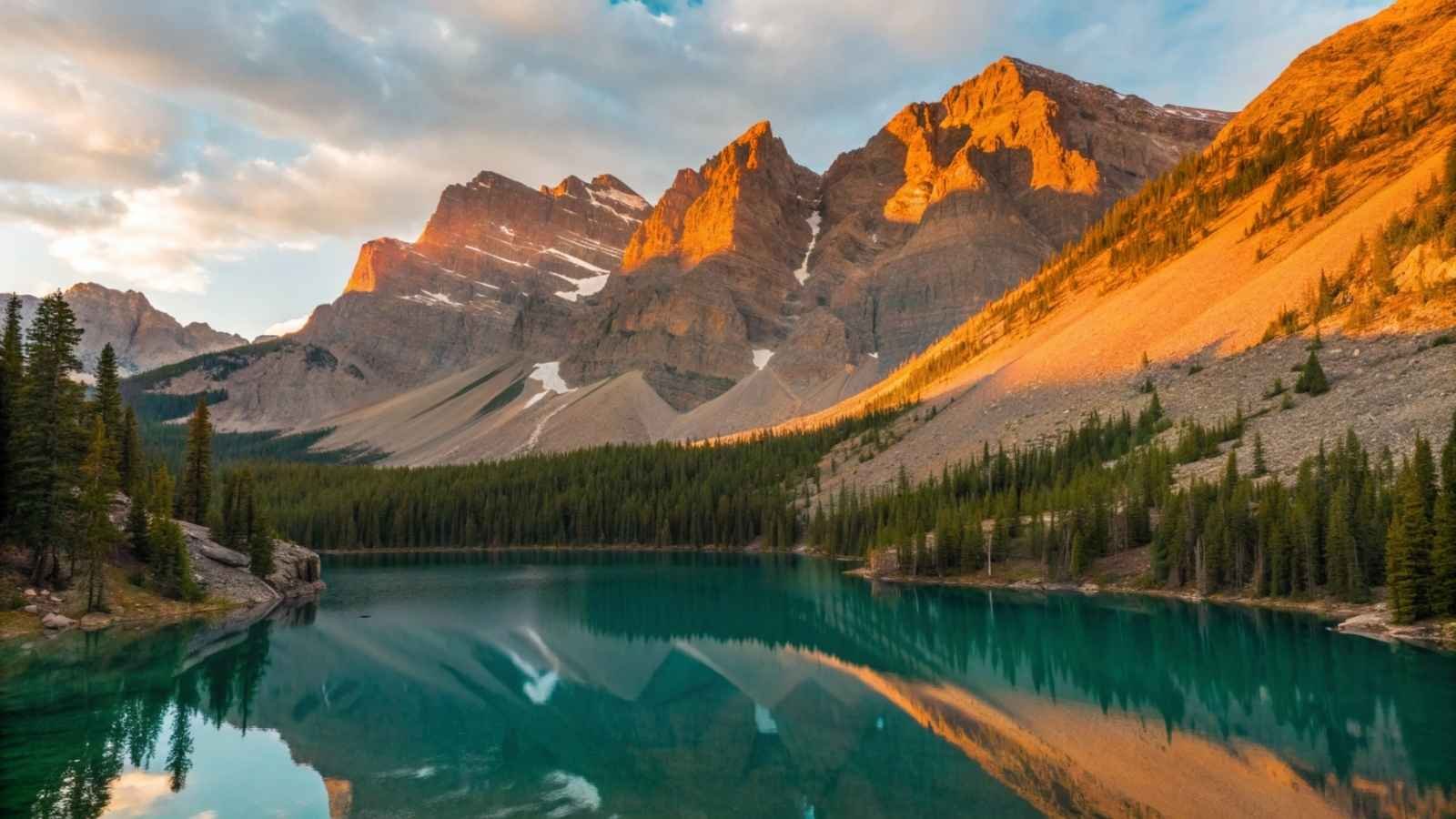
There’s a quiet kind of wonder still left in America — the kind you don’t find on postcards or packed shuttle buses. It hides in the silence of old forests, in the echo of rivers carving stone, in skies so dark they hum with stars. These are the places that don’t make the headlines but stay with you long after you’ve left.
In 2025, a new wave of travelers is skipping the crowded icons for these quieter giants — America’s New “Great Eight” — national parks that feel undiscovered, untamed, and utterly unforgettable. Ready to find the wild again?
1. North Cascades National Park, Washington
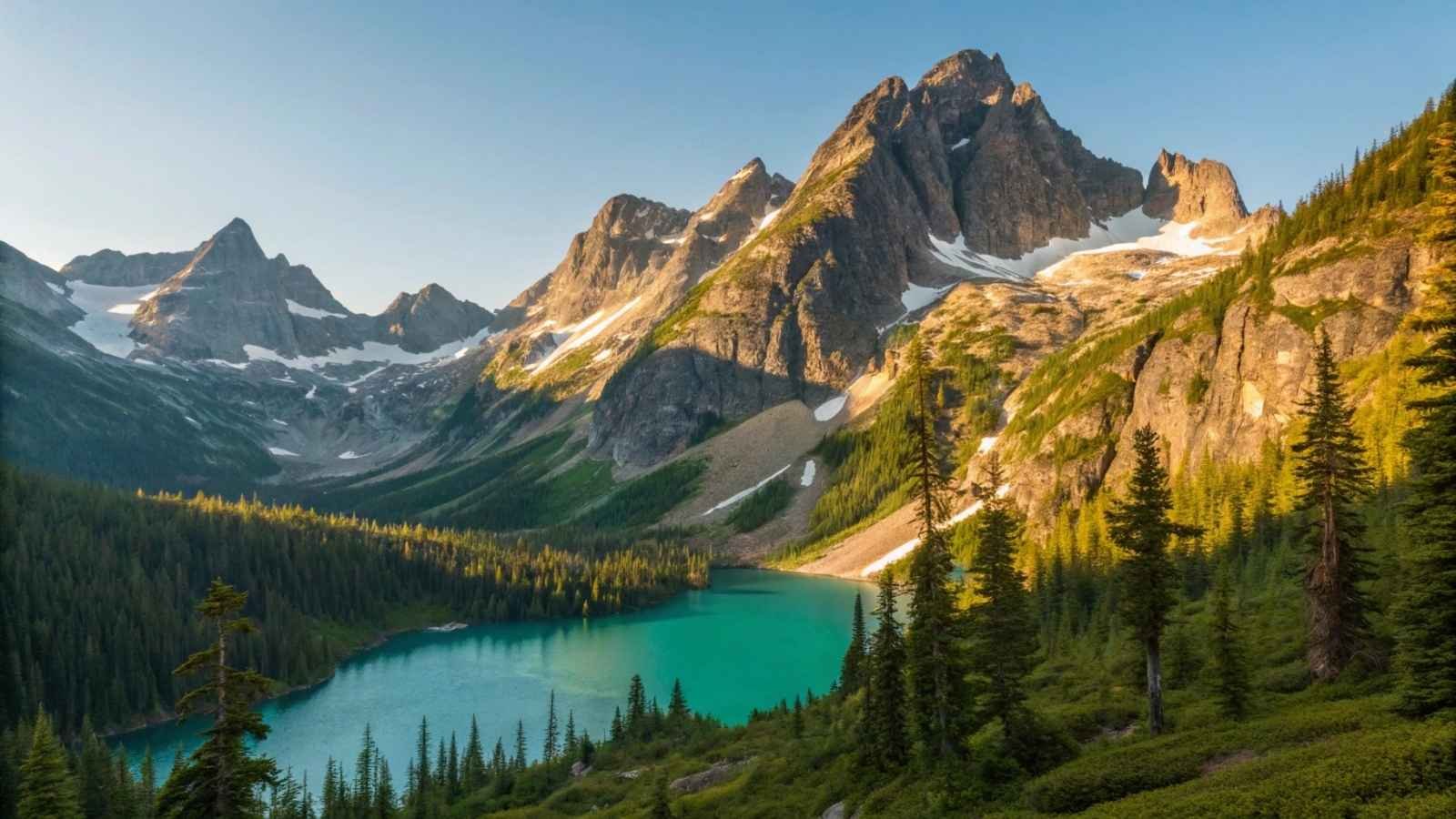
North Cascades feels like it belongs to another planet — or at least another continent. Often called the “American Alps,” this park hides jagged peaks, emerald lakes, and more glaciers than anywhere else in the U.S. outside Alaska. Yet, despite its jaw-dropping beauty, it remains astonishingly quiet. You can hike for hours here and cross paths with more mountain goats than people, which is exactly what gives it its untamed charm.
What makes the North Cascades so special is the raw contrast between its landscapes — rugged alpine ridges giving way to lush forests and turquoise waters like Diablo Lake. Trails like Maple Pass Loop or Cascade Pass put you front and center to views that rival any postcard. It’s a paradise for serious hikers but still holds enough shorter, rewarding trails for day explorers who just want to be surrounded by wilderness without the crowds.
Then there’s that intangible calm. When the wind moves through the pines and the glaciers gleam under the sun, there’s this rare feeling — like you’ve stepped back into a world before noise, screens, and schedules. For anyone craving solitude without sacrificing beauty, this park is pure gold.
Quick Travel Notes:
- Best Months to Visit: July to September (roads and trails fully open)
- Nearest Town: Marblemount, WA
- Top Trails: Maple Pass Loop, Cascade Pass, Diablo Lake Trail
- Activities: Backpacking, kayaking, stargazing, mountaineering
- Crowd Level: Very low — one of the least visited parks in the U.S.
2. Isle Royale National Park, Michigan
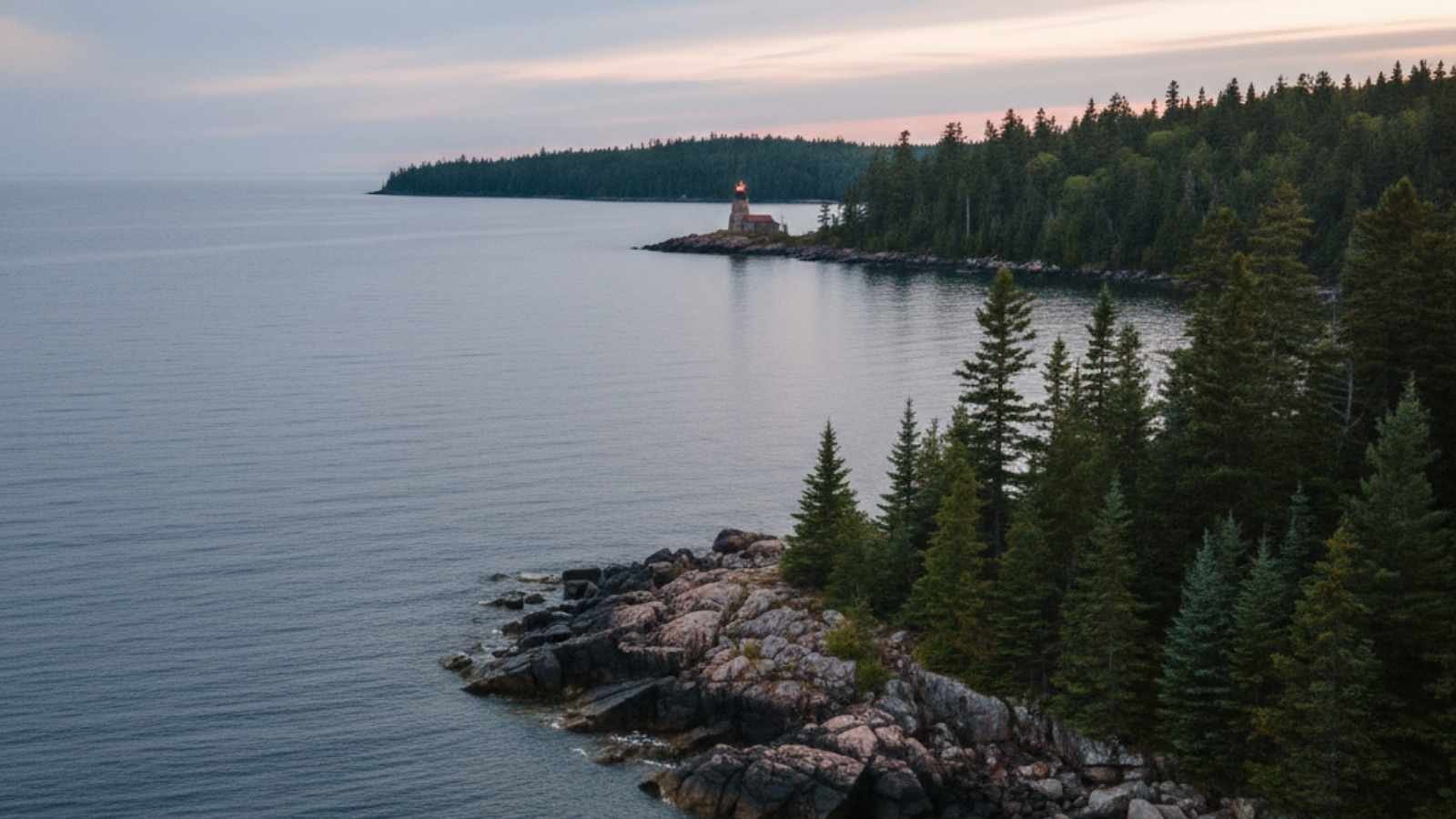
If solitude had a national park, Isle Royale would be it. Floating in the middle of Lake Superior, it’s accessible only by boat or seaplane, which keeps the crowds away and the wilderness wonderfully intact. The island hums with nature — moose wander through spruce forests, loons call across glassy waters, and the silence feels heavier than any sound.
What makes Isle Royale unique is its complete sense of isolation. There are no cars, few amenities, and zero Wi-Fi — just trails, lakes, and the rhythm of your own steps. The Greenstone Ridge Trail is the park’s crown jewel, stretching nearly 40 miles across the island. For those who crave a genuine escape, spending a few nights camping along that ridge feels like disappearing into another era.
There’s also a deeper story here — Isle Royale is one of the longest-running natural laboratories in the world, home to a delicate balance between wolves and moose. Scientists have studied this dynamic for decades, offering a fascinating glimpse into how ecosystems evolve without human interference.
Quick Travel Notes:
- Best Months to Visit: June through early September (park closes in winter)
- Getting There: Ferry from Houghton or Copper Harbor, MI; seaplane available
- Top Activities: Backpacking, kayaking, scuba diving, wildlife watching
- Stay Options: Camping only — permits required
- Crowd Level: Very low — under 30,000 visitors annually
3. Dry Tortugas National Park, Florida
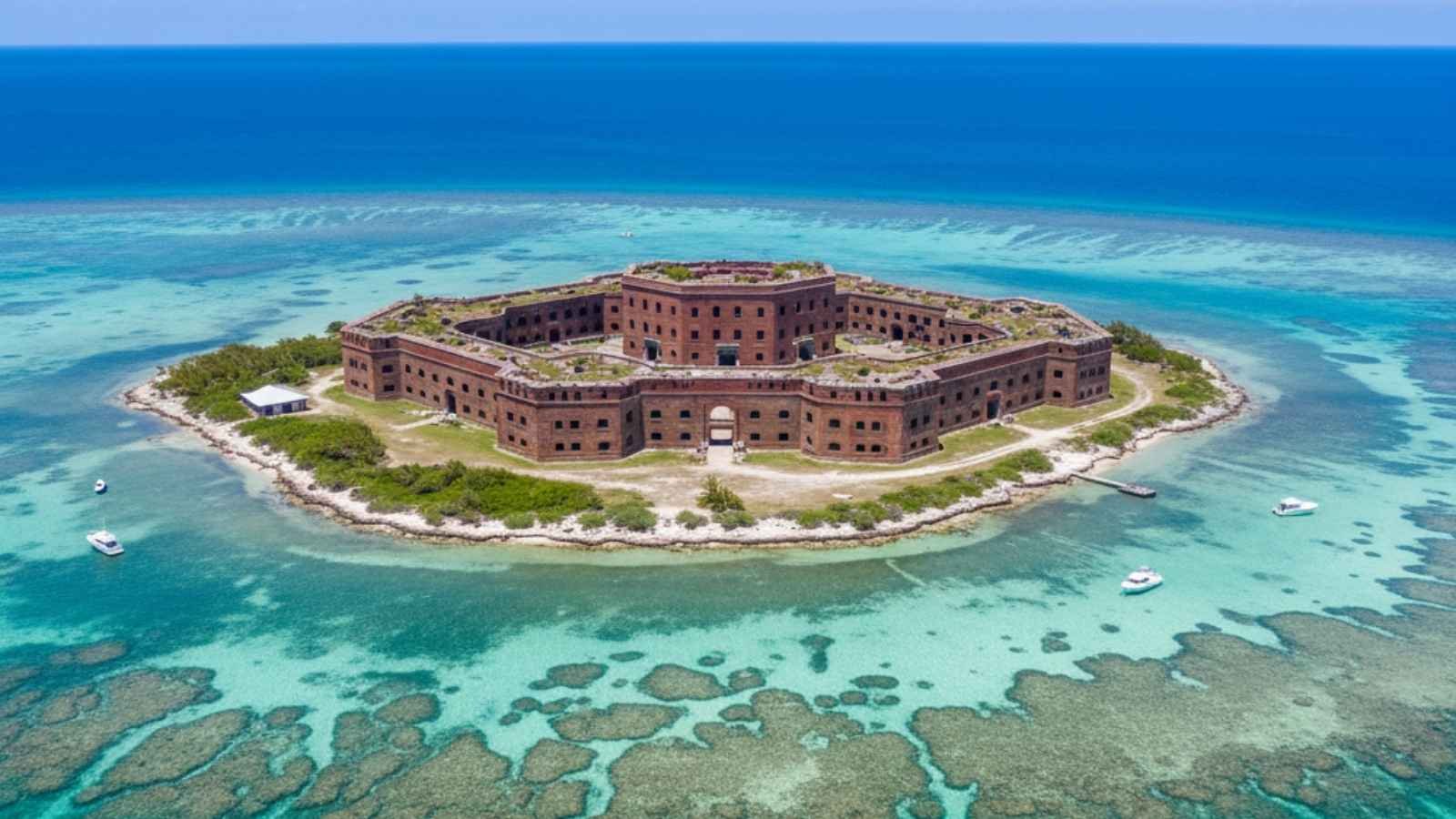
Seventy miles west of Key West lies a surreal cluster of islands ringed by crystal-blue waters — Dry Tortugas, one of the most remote and visually stunning parks in America. Centered around historic Fort Jefferson, this park combines tropical beauty, maritime history, and coral reef exploration in a way few others can.
You’ll arrive by ferry or seaplane, and the moment you step off, you’re surrounded by the bluest water you’ve ever seen. Beneath the surface, coral gardens teem with colorful fish and sea turtles, while the massive brick walls of Fort Jefferson tell tales of pirates, soldiers, and prisoners. It’s a mix of history and nature that feels almost cinematic.
What really elevates the experience is the overnight camping option. When the last ferry leaves, you’re left on a remote island under a blanket of stars, with only the sound of waves and the glow of lanterns from a handful of other campers. It’s not luxury — but it’s pure magic.
Quick Travel Notes:
- Best Months to Visit: November to April (calmer seas and cooler temps)
- Getting There: Ferry or seaplane from Key West
- Top Activities: Snorkeling, exploring Fort Jefferson, birdwatching, camping
- Stay Options: Primitive camping (limited spots, reserve early)
- Crowd Level: Moderate by day, nearly empty by night
4. Great Basin National Park, Nevada
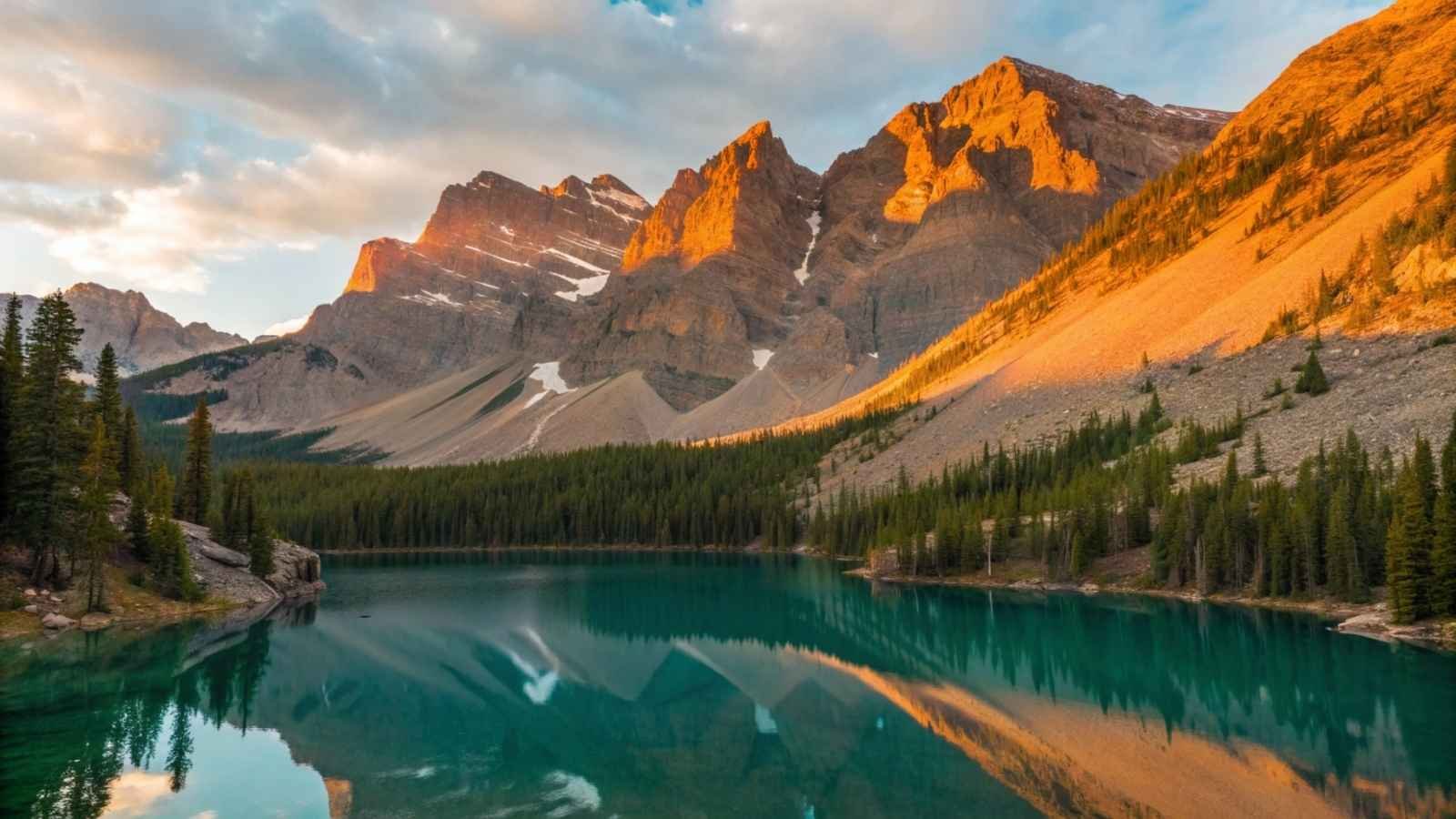
Great Basin is the kind of place that surprises you the moment you arrive. Tucked away in eastern Nevada, it’s often overlooked by travelers chasing the glitz of Las Vegas — but what they miss is one of the darkest night skies and most varied landscapes in the country.
You’ll go from ancient pine forests to glacier-carved peaks to hidden limestone caves, all in one day. The Lehman Caves are a highlight, full of intricate stalactites and rare formations that feel like stepping inside a secret world. Then, when night falls, the stargazing is unreal — this park has some of the clearest skies in North America, and the Milky Way feels close enough to touch.
What really defines Great Basin, though, is its quiet diversity. You can hike 13,000-foot Wheeler Peak in the morning, drive through desert sagebrush by noon, and be surrounded by alpine lakes by afternoon. It’s a park of extremes — and every inch of it feels undiscovered.
Quick Travel Notes:
- Best Months to Visit: June to September for hiking; year-round for stargazing
- Nearest Town: Baker, NV
- Top Trails: Wheeler Peak Summit, Bristlecone Pine Trail, Alpine Lakes Loop
- Activities: Hiking, cave tours, stargazing, scenic drives
- Crowd Level: Very low — fewer than 150,000 visitors a year
5. Guadalupe Mountains National Park, Texas
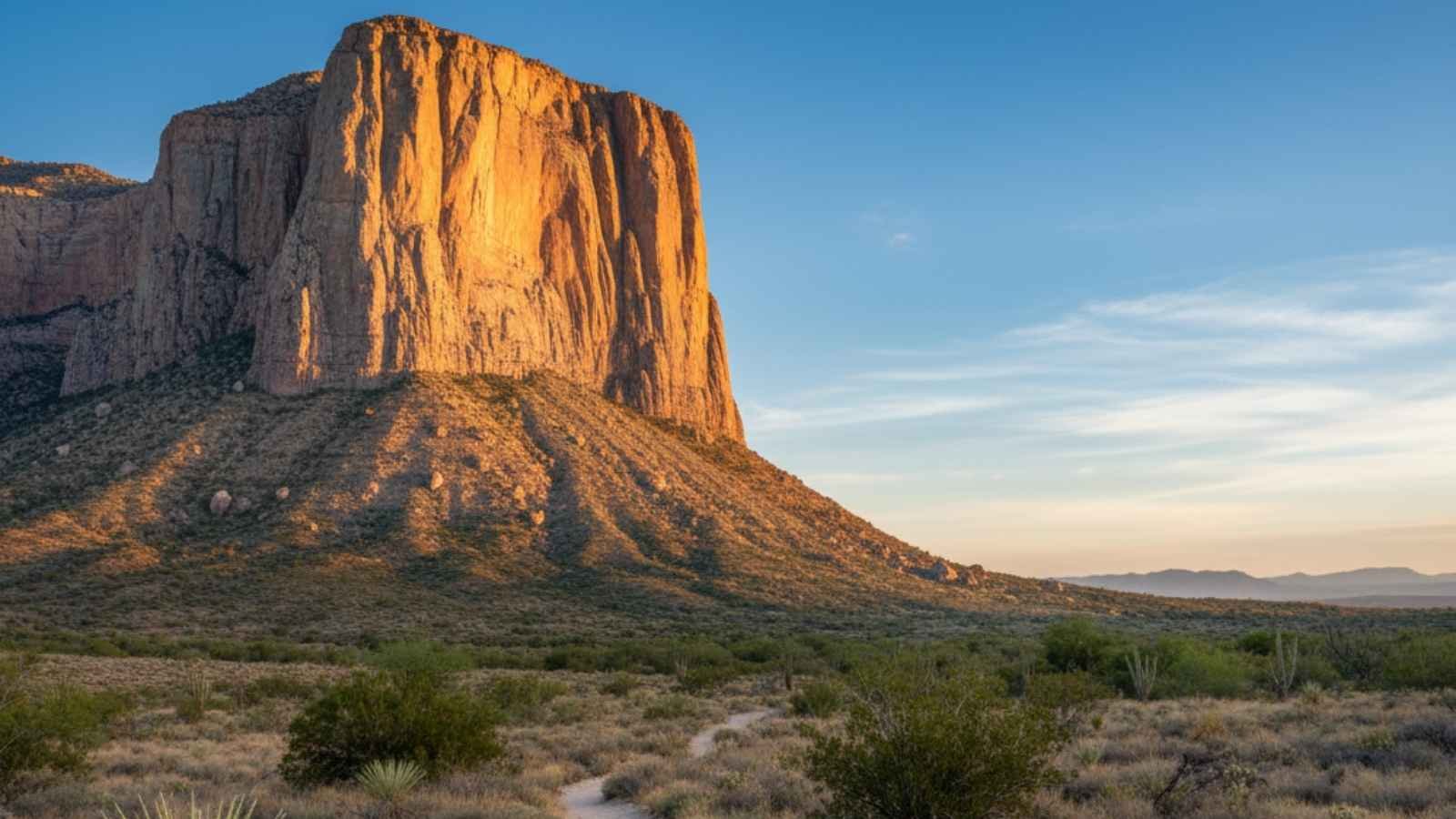
In the far reaches of West Texas, the Guadalupe Mountains rise from the desert like a silent fortress. Once an ancient coral reef, this range now guards some of the most dramatic desert peaks in the U.S., including Guadalupe Peak — the highest point in Texas.
What makes this park a standout is how untouched it feels. Trails like Devil’s Hall and McKittrick Canyon lead you through red-rock walls, rippling desert grass, and, in fall, a burst of golden foliage that rivals New England. It’s a stark, powerful beauty — not lush or soft, but wild and humbling in the best way.
Then comes the silence. Away from the cities and cell towers, there’s nothing but wind, stone, and space. Hike to the top of Guadalupe Peak at sunset and you’ll understand why so many call this park one of America’s last great frontiers — the kind of place where you remember what vastness really means.
Quick Travel Notes:
- Best Months to Visit: October to April (pleasant temperatures, fewer crowds)
- Nearest Town: Carlsbad, NM (about 1 hour away)
- Top Trails: Guadalupe Peak Trail, McKittrick Canyon, Devil’s Hall
- Activities: Hiking, backpacking, wildlife photography
- Crowd Level: Low — under 250,000 visitors annually
6. Wrangell–St. Elias National Park, Alaska
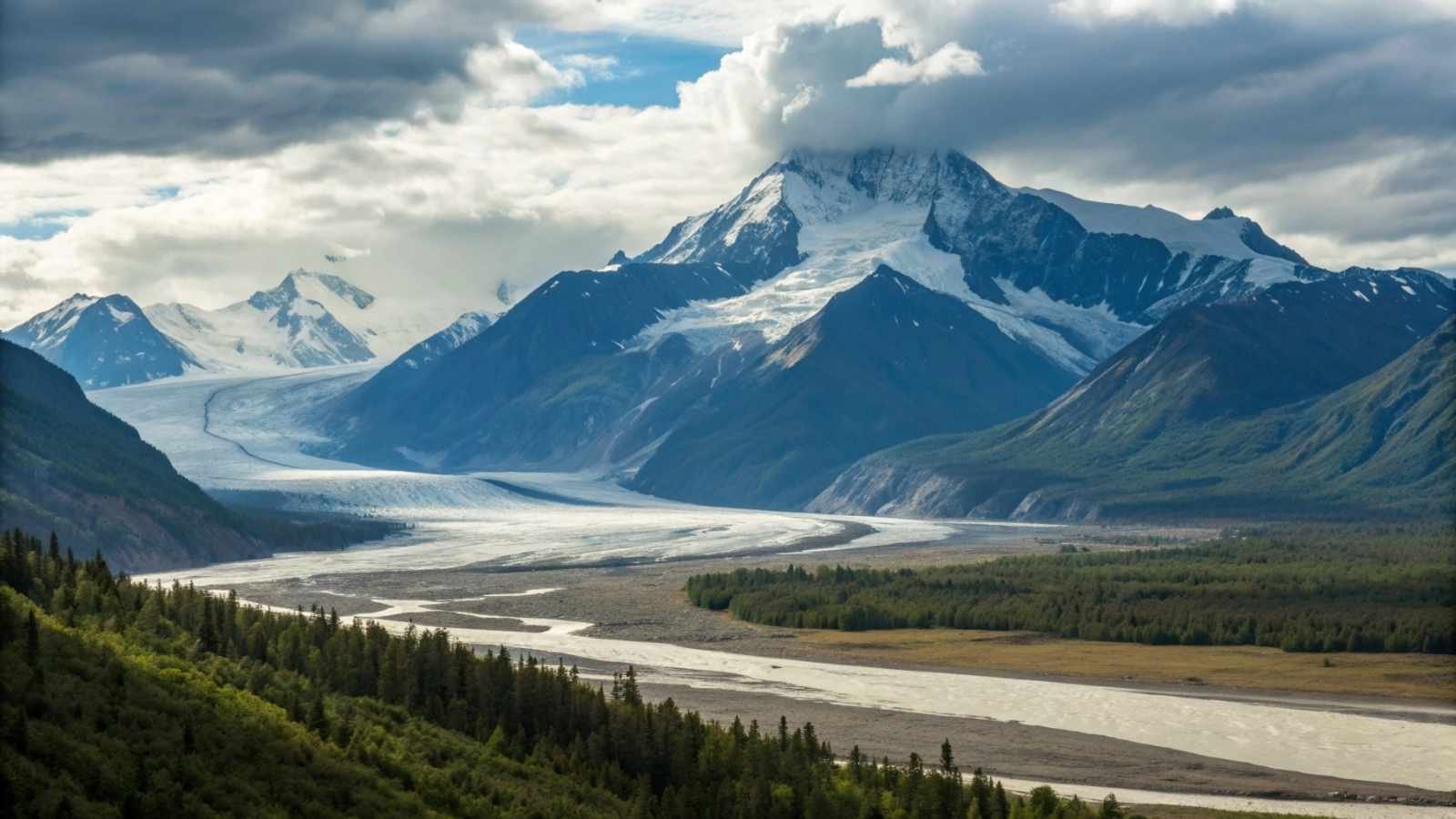
Calling Wrangell–St. Elias, a national park, almost feels like underselling it — it’s the largest in the United States, roughly the size of six Yellowstone combined. Yet, this Alaskan giant remains one of the least visited. Here, massive glaciers, towering peaks, and wild rivers create a landscape that feels untouched by time.
What’s astonishing is the scale. You can stand at the foot of a glacier that stretches farther than some states, or look across ice fields that vanish into the horizon. The few tiny communities within the park, like McCarthy and Kennecott, offer a window into Alaska’s frontier history — where old mining ruins meet the quiet hum of wilderness.
This is not a casual park — it’s remote, rugged, and thrillingly real. Whether you’re hiking Root Glacier or flying over the endless mountain ranges, Wrangell–St. Elias makes you feel small in the best possible way — part of something vast, powerful, and raw.
Quick Travel Notes:
- Best Months to Visit: June to early September
- Nearest Towns: McCarthy and Kennicott, AK
- Top Activities: Glacier hiking, flightseeing, ice climbing, exploring ghost towns
- Getting There: Small plane or gravel road via McCarthy Road
- Crowd Level: Very low — around 80,000 visitors annually
7. Gates of the Arctic National Park, Alaska
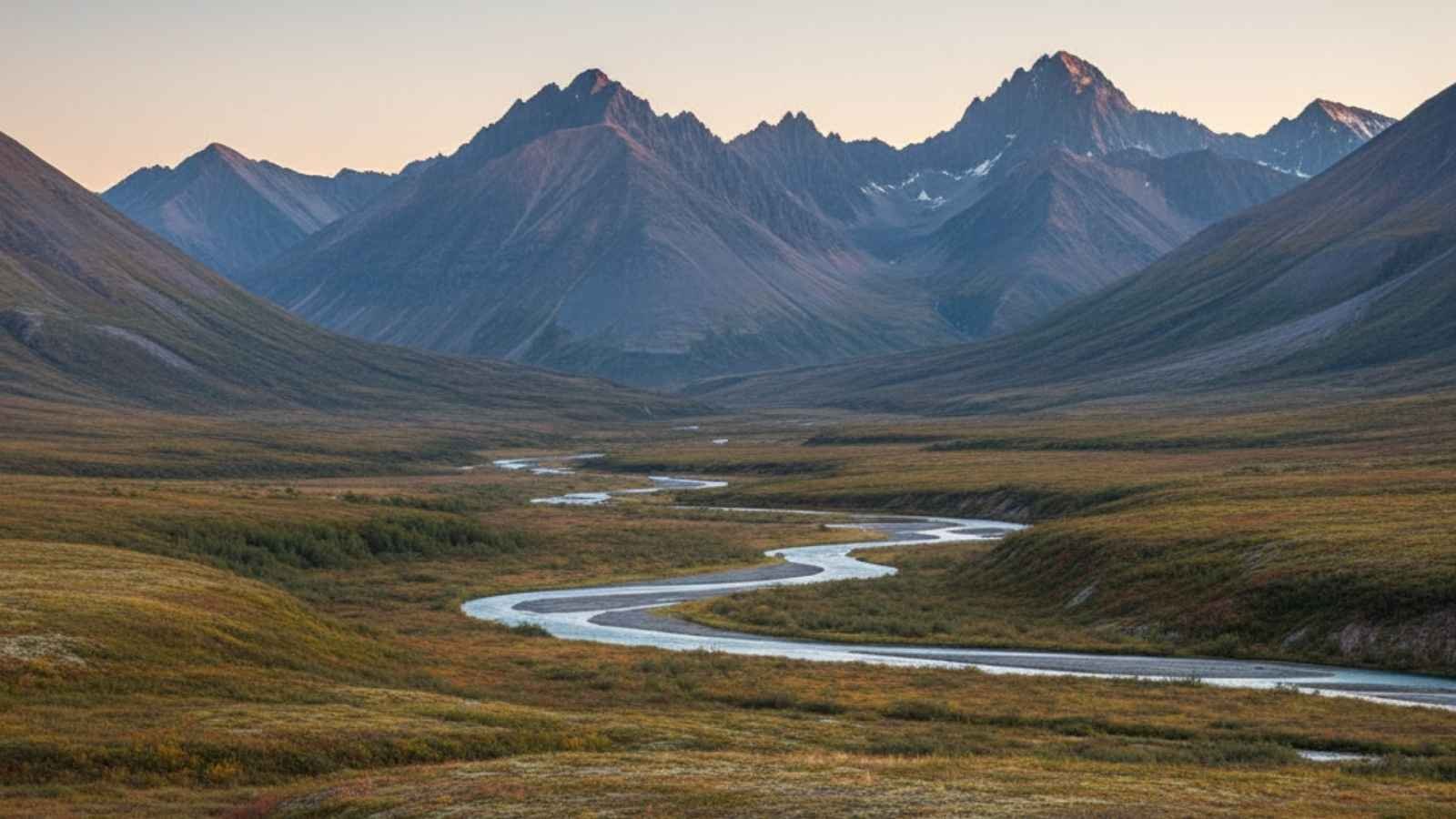
Gates of the Arctic is where wilderness truly means wilderness. No roads, no trails, no visitor centers — just pure backcountry stretching across the Brooks Range. It’s America’s least visited national park, not because it lacks beauty, but because it requires genuine adventure to reach.
You arrive by bush plane, landing on gravel bars or tundra strips, and from that moment, you’re in a different world. Rolling tundra, caribou herds, and untouched rivers define the landscape. It’s a place where you’re completely on your own — navigation, weather, and wildlife are part of the deal.
But that’s exactly what draws people here. Gates of the Arctic offers a kind of silence and freedom you can’t find anywhere else in the country. It’s for travelers who crave the thrill of complete isolation, where every mile is earned and every view feels like a secret.
Quick Travel Notes:
- Best Months to Visit: July to early September
- Getting There: Fly from Fairbanks via bush plane
- Top Activities: Backpacking, packrafting, wildlife viewing, wilderness photography
- Stay Options: Backcountry camping only
- Crowd Level: Extremely low — under 15,000 visitors annually
8. Katmai National Park, Alaska
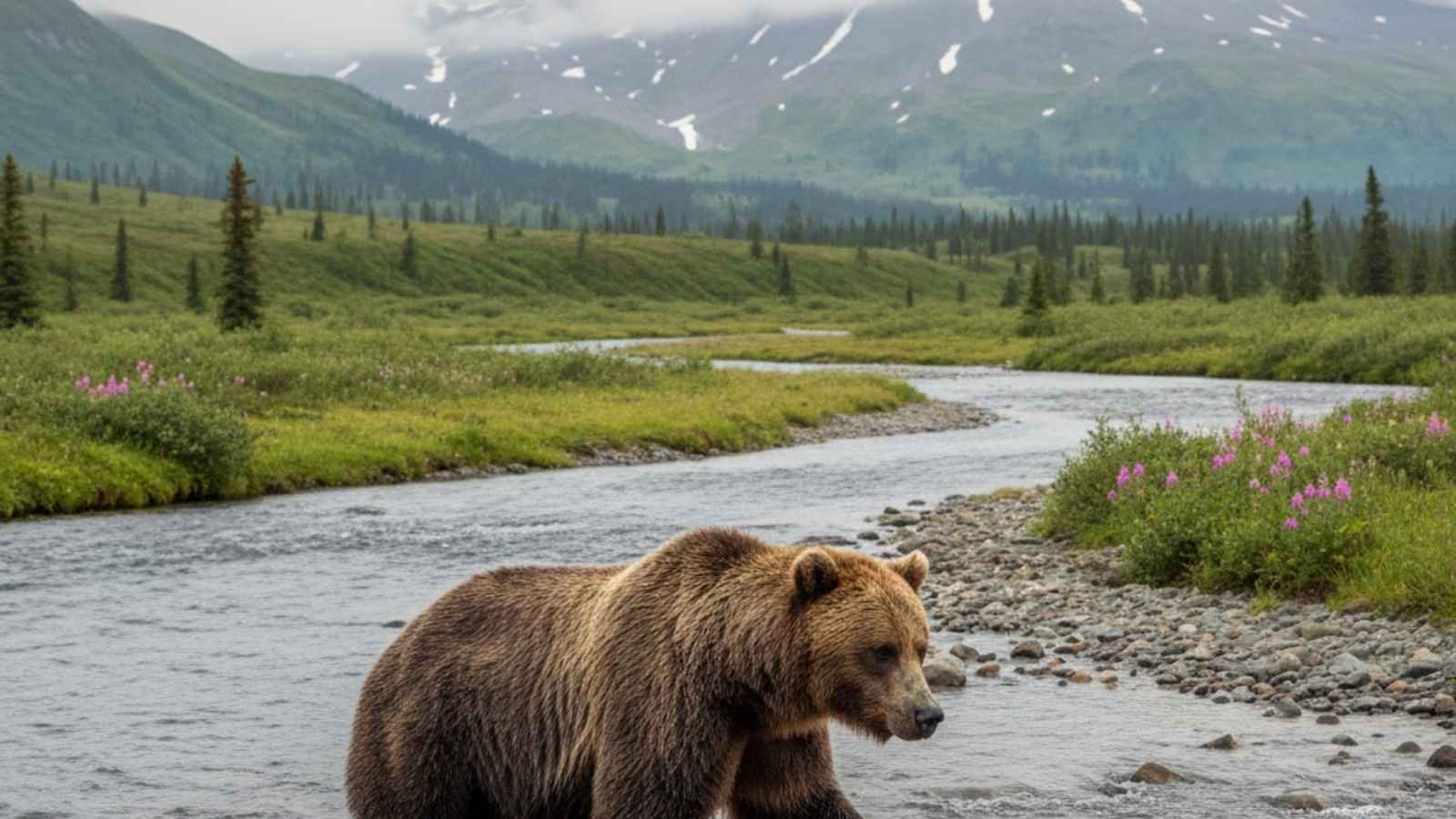
Katmai is best known for its brown bears — and rightly so. Each summer, these massive creatures gather along Brooks Falls to feast on leaping salmon, creating one of nature’s most unforgettable shows. But there’s more to Katmai than just its furry residents. This park sits on a landscape born of fire, shaped by one of the most powerful volcanic eruptions in modern history.
The 1912 eruption of Novarupta reshaped the region, leaving behind the surreal Valley of Ten Thousand Smokes — a vast ash-covered plain that still looks otherworldly today. Exploring it feels like stepping onto a lunar landscape, surrounded by steaming fumaroles and volcanic ridges.
Katmai blends power and serenity in rare balance — bears fishing calmly against a backdrop of volcanic might. And while most people come for the wildlife, they leave remembering the scale of Alaska’s wild forces that continue to define this park.
Quick Travel Notes:
- Best Months to Visit: June to September
- Getting There: Fly from King Salmon or Homer, AK
- Top Activities: Bear viewing at Brooks Falls, hiking, photography, flightseeing
- Stay Options: Brooks Lodge, camping, guided tours available
- Crowd Level: Moderate — around 75,000 visitors annually






